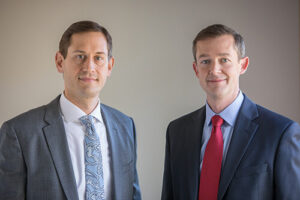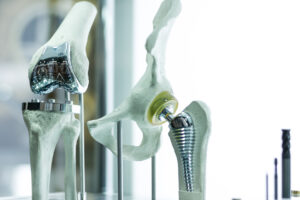 About half of Americans suffer a bone fracture before they turn 65. Many of these broken bones will heal with a simple cast and about six weeks of rest. But as many as 50% of fractures require a visit to the emergency room and surgery.
About half of Americans suffer a bone fracture before they turn 65. Many of these broken bones will heal with a simple cast and about six weeks of rest. But as many as 50% of fractures require a visit to the emergency room and surgery.
Regardless of the severity of your broken bone, you will need medical care. You may also need physical therapy after your bone heals. During your rehabilitation, your doctor may limit your activities. And after you heal, you may suffer permanent disabilities.
Read on for a summary of the causes and effects of broken bones and the injury compensation you can pursue them.
What is the Anatomy of Your Skeleton?
 Your skeleton includes your bones. Bones provide your body with structure. You can think of your bones as the scaffolding that supports the soft tissue and organs of your body.
Your skeleton includes your bones. Bones provide your body with structure. You can think of your bones as the scaffolding that supports the soft tissue and organs of your body.
Bones are the ossified tissue in your body. Ossification is a process where the body assembles minerals like calcium and phosphorus into a web-like matrix. This mineral matrix makes your bones rigid. Ossification distinguishes your bones from your soft tissue.
In addition to supporting your body, your bones also play an important role in your immune and circulatory systems. Your bone marrow sits inside most of your bones. The bone marrow creates new blood cells to replace old, worn-out blood cells.
Ligaments hold your skeleton together. They anchor directly to the bones at the joints. Ligaments provide the strength to hold the bones in position. They also provide the flexibility to allow your joints to move.
Tendons also anchor to your bones. Tendons hold muscles to the skeleton. The muscles and tendons cooperate to provide strength and motion to your body.
What Causes Broken Bones?
Bones break for two primary reasons:
Force
Rigid bones have an inherent material strength. When subjected to a force that exceeds their material strength, bones will break.
The shape of the break will often depend on the nature of the force. Pressure over a large area will crush or shatter a bone. A bending force will cause a transverse fracture across the axis of the bone. A twisting force will cause a spiral fracture around the axis of the bone.
Repetitive Stress
Normal activity will cause microscopic fractures to form in your bones. When you rest, your body heals these tiny fractures. But if you repeatedly subject the same bones to the same stress, the microscopic fractures will propagate into stress fractures instead of healing.
Repetitive stress often happens during sports activities and at work. People with jobs that require them to repeatedly walk, jump, lift, and carry can develop stress fractures.
What Types of Broken Bones Can Occur?
Bones can break in many ways. The nature of the fracture will determine how your doctor treats the broken bone, including whether you need surgery.
Doctors generally look at three characteristics when diagnosing broken bones, including:
Non-Displaced or Displaced
In a non-displaced fracture, the broken ends of the bone remain aligned. Non-displaced fractures usually do not need surgery. The doctor will immobilize the broken bone with a cast, splint, or brace.
In a displaced fracture, the broken ends of the bone move out of alignment. Sometimes doctors can realign the bone by manipulating it without surgery. But sometimes, doctors will need to operate to realign the bone and secure it with plates and screws.
Closed or Open Fracture
A fracture can be closed or open. A closed fracture happens when the bone breaks, but the broken bone does not pierce the skin.
An open fracture happens when the bone breaks the skin after fracturing. Doctors commonly refer to an open fracture as a compound fracture. Compound fractures can develop complications because of the open wound and the displacement of the bone.
Doctors often operate to repair an open fracture. During this surgery, the doctor will realign the bone, clean the wound, and suture it.
Nature of the Fracture
The nature of the fracture can affect treatment and prognosis. A comminuted fracture happens when a bone breaks into two or more pieces. Comminuted fractures often result from crushing injuries.
A comminuted fracture almost always requires surgery. Doctors need to reassemble as many of the pieces as possible using screws and plates. Because of the severe damage to the bone, comminuted fractures can take a year or longer to heal.
What Are Some Complications from Broken Bones?
Broken bones can cause life-threatening complications, including:
Infection
Open fractures can develop infections. Infections happen when microorganisms invade your body. They multiply rapidly and kill your body’s cells as they compete for resources.
In response, your body triggers fever and swelling. The swelling traps the invading microbes, and the fever kills them. Between the microorganisms and your body’s response, an infection can cause severe illness or even death.
Nerve Damage
When a fractured bone displaces, it can tear soft tissue. The body can repair most of these tissues. But if nerves get stretched or torn, the damage can last the rest of your life.
Nerve damage can cause:
- Numbness or tingling
- Loss of dexterity
- Loss of temperature sensitivity
If the damaged nerves sit in your spinal cord, you may experience paralysis.
Pulmonary Embolism
When you fracture a bone, the body forms a blood clot over the fracture. This stops the bleeding and protects the fracture as the body repairs it.
A pulmonary embolism happens when a piece of the clot breaks off and travels to your lungs. You could experience chest pain, shortness of breath, and lightheadedness. Without emergency treatment, you might lose consciousness or die.
How Do You Get Compensation for Broken Bones?
When broken bones happen in a work accident, you can seek workers’ compensation benefits. When broken bones happen off the clock, you must prove that the other party was negligent in causing your accident. For example, if your bone gets broken in a pedestrian accident, you must prove that the driver was at fault for hitting you.
Broken bones can cause temporary or permanent disabilities that prevent you from working. Depending on which bone you break and your job, you may even need to quit working. To learn about the compensation you can seek for broken bones, contact our FVF Law attorneys for a free, no-pressure consultation with an experienced personal injury lawyer at (512) 982-9328.